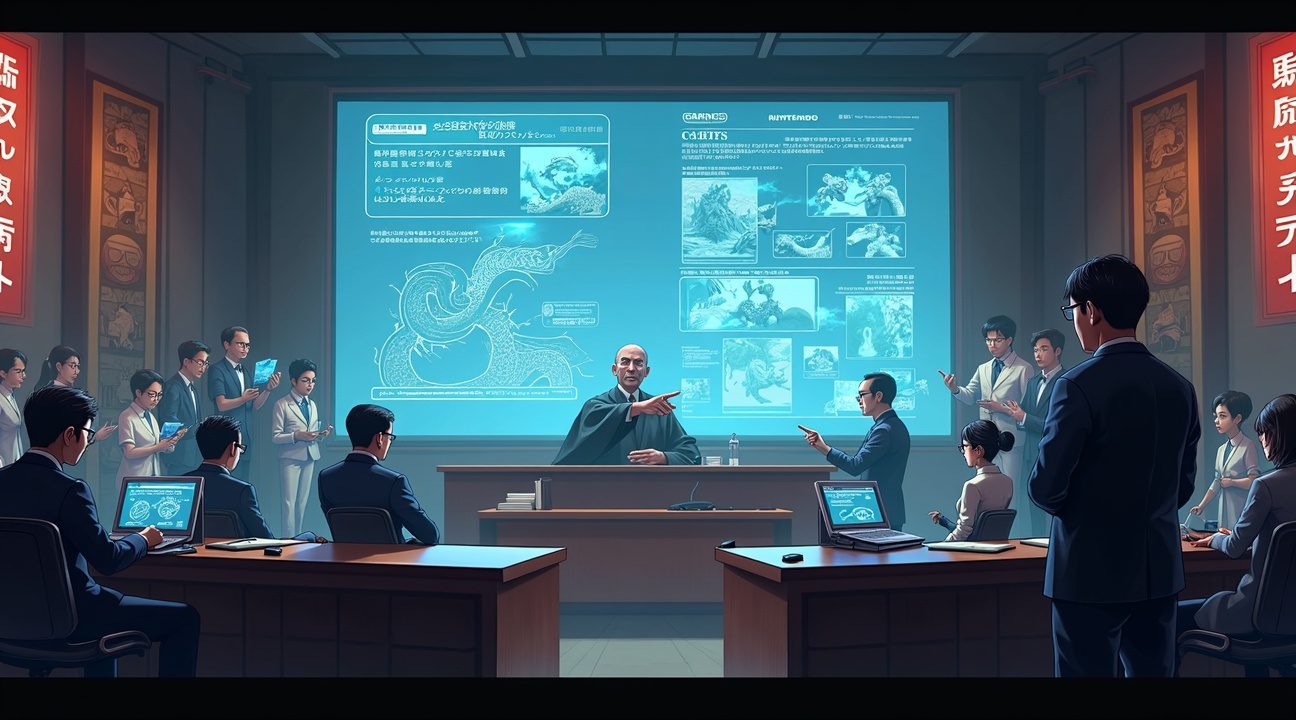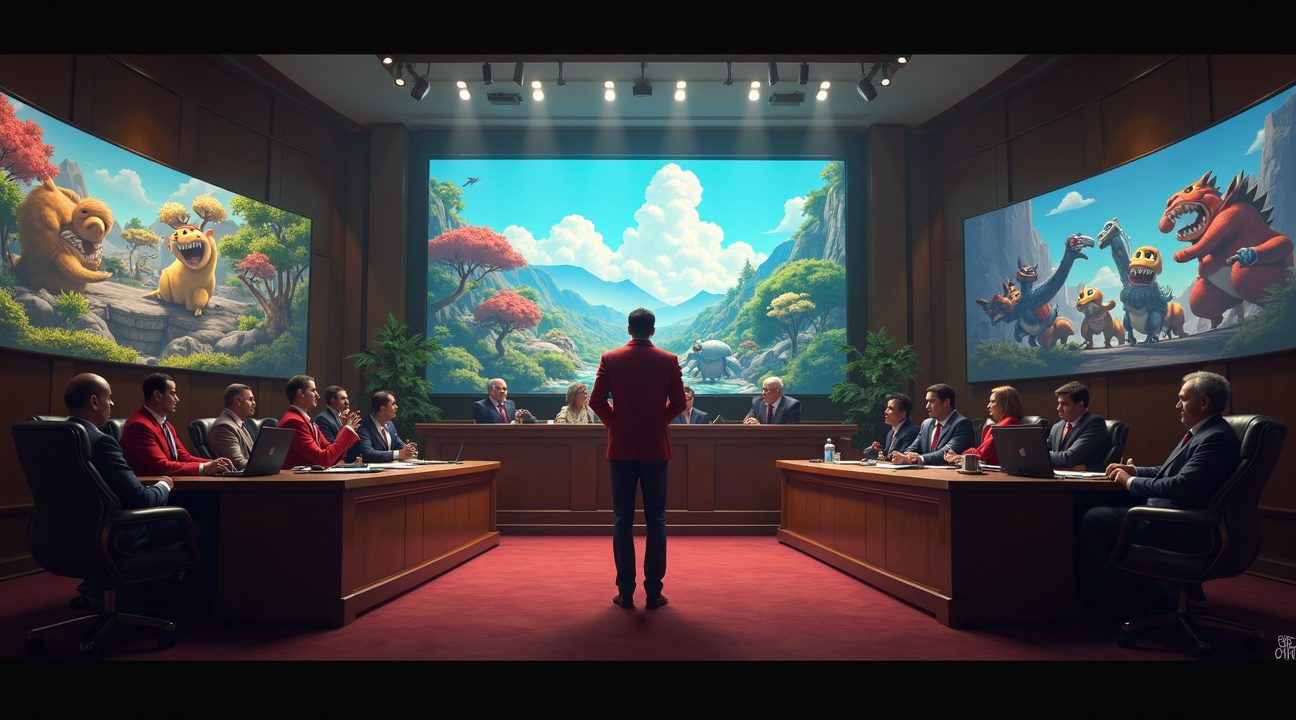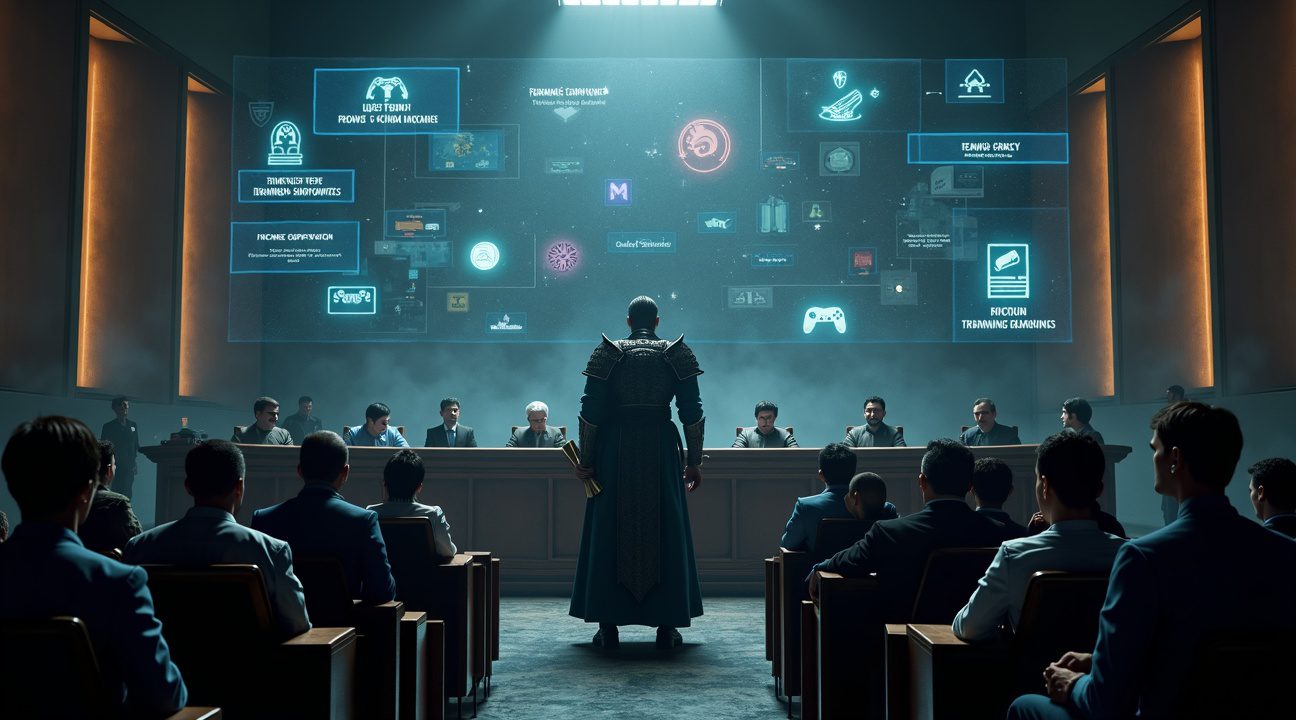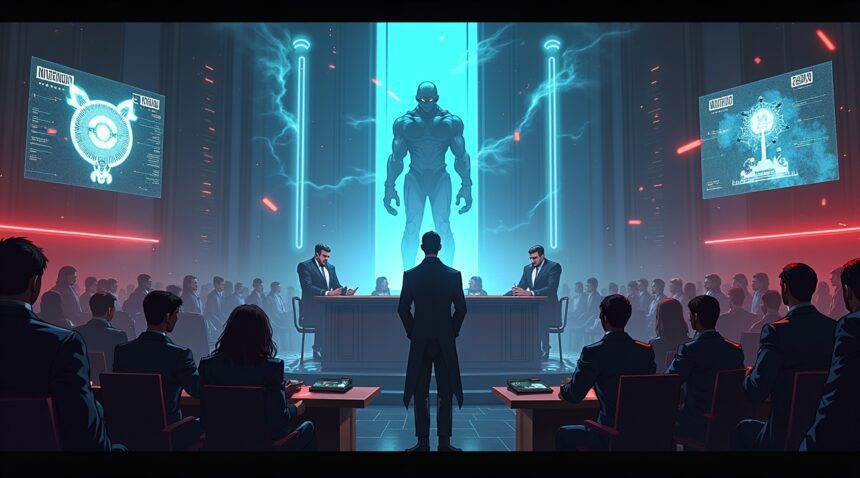Nintendo executed an unprecedented tactical maneuver in July 2025 by rewriting patent claims during active litigation against Palworld developer Pocketpair.
Strategic Patent Amendments During Litigation
Nintendo’s decision to amend one of its three patents involved in the lawsuit marks a bold and unusual move in the midst of legal proceedings. This alteration, approved by the Japan Patent Office, highlights Nintendo’s proactive approach to reinforcing its legal standing. It also reveals potential vulnerabilities in the original patent language, which may have been too vague or susceptible to invalidation during trial.
Impact on Palworld’s Gameplay Features
A direct consequence of the lawsuit saw Pocketpair removing notable game mechanics from Palworld, such as the unique riding features and the Pal summoning system. These features were central to the game’s appeal and originality. The removal underscores how active litigation can drastically reshape game development in real time.
Community and Industry Concerns
Reactions from the gaming community and industry professionals have been critical. Many fear that aggressive patent enforcement, especially from influential companies like Nintendo, may suppress creativity and innovation by smaller developers. Industry experts argue that while patents are meant to protect innovation, overly broad or aggressively enforced claims might do the opposite.
Key Concerns Highlighted Include:
- Suppression of innovation – Developers may shy away from new gameplay mechanics for fear of infringing on patents.
- Legal overreach by large corporations – Companies with bigger legal budgets might use patents to dominate rather than protect.
- Uncertain legal environment – Lack of clear precedent on gameplay patents increases risk across the industry.
Possible Precedent for Future Litigation
This case could set far-reaching precedents for how patent law applies to gameplay mechanics. Should Nintendo’s approach prove successful, it may embolden other corporations to strategically modify claims mid-trial, reshaping how the gaming sector navigates legal protections.
Potential Long-Term Outcomes
- More frequent use of mid-litigation patent amendments.
- Increase in litigation risks for smaller or indie developers.
- Industry-wide evolution in how gameplay is protected or patented.
As the case unfolds, developers and legal experts will be closely watching whether this bold strategy by Nintendo becomes a new norm or faces backlash strong enough to limit its replication.
Nintendo Modifies Patent Claims Mid-Lawsuit in Unprecedented Gaming Industry Move
In July 2025, Nintendo made an unusual strategic decision by modifying the claims of one of its three patents-in-suit against Pocketpair, the developer behind Palworld. Both Games Fray and IGN documented this development, marking a rare mid-case tactical adjustment in high-profile intellectual property litigation within the gaming sector.
The Japan Patent Office approved and published these claim amendments, representing a significant procedural move that demonstrates Nintendo’s commitment to strengthening its case against the monster-catching game that has drawn widespread attention since its release.
Understanding Patent Amendment Strategy
Patent amendments provide patent holders with the opportunity to narrow, clarify, or refocus their claims while litigation remains active. Companies typically pursue these modifications in response to defendant defenses or to strengthen their infringement arguments. I’ve observed that such amendments can dramatically alter the trajectory of a case, especially when they target specific gameplay elements that weren’t initially covered under the original patent language.
Nintendo’s amendments specifically targeted Palworld gameplay elements that the company alleges infringe upon core Pokémon mechanics. This strategic adjustment suggests Nintendo identified potential weaknesses in its original patent claims and sought to address them proactively rather than risk an unfavorable ruling.
Industry Implications and Historical Context
Patent enforcement between direct competitors in the video game industry remains historically rare, particularly regarding ‘game rules’ or gameplay mechanics. The gaming industry has traditionally relied more heavily on copyright and trademark protection for intellectual property, making Nintendo’s patent-focused approach against Pocketpair noteworthy.
This case represents uncharted territory for how gaming companies might protect innovative gameplay systems through patent law. The outcome could establish important precedents for how future gaming disputes unfold, potentially encouraging more aggressive patent enforcement across the industry.
Nintendo’s willingness to modify patent claims mid-lawsuit demonstrates the company’s determination to protect what it considers core innovations in creature-collecting gameplay. The amendments signal that Nintendo views this case as more than just a dispute over Palworld’s popularity – it represents a broader effort to establish clear boundaries around gameplay mechanics that could influence an entire genre of games.

How the Palworld Phenomenon Sparked Nintendo’s Legal Challenge
I observed an unprecedented gaming phenomenon unfold when Pocketpair launched Palworld in January 2024. The game’s explosive success caught the industry off guard, rapidly accumulating over 32 million players globally within its first few months. This massive player base thrust the relatively small indie developer into the spotlight, but it also attracted unwanted attention from gaming’s most protective intellectual property holder.
The Pokémon Comparisons That Changed Everything
Players immediately noticed striking similarities between Palworld’s mechanics and Nintendo’s crown jewel franchise. The game’s creature-catching mechanics, art style, and various features sparked countless discussions across social media platforms about potential intellectual property concerns. I witnessed gaming communities create memes and comparisons highlighting these similarities, which only amplified the controversy surrounding the game’s design choices.
The visual and mechanical resemblances weren’t lost on Nintendo and The Pokémon Company. Palworld’s creature designs, dubbed “Pals,” bore enough similarity to established Pokémon that many players dubbed it “Pokémon with guns.” These creature abilities and designs became central to the brewing legal storm that would follow.
By September 2024, Nintendo decided they’d seen enough. The gaming giant, along with The Pokémon Company, filed lawsuits in Japan specifically targeting Pocketpair for alleged patent violations. I noticed this marked a significant escalation from typical copyright concerns to more complex patent infringement claims, suggesting Nintendo believed Palworld crossed fundamental gameplay boundaries they’d legally protected.
The litigation centered on three specific Japanese patents, though Nintendo’s strategy extended beyond domestic protection. They moved to secure parallel U.S. patent coverage, positioning themselves for potential international legal action. However, as of mid-2025, no U.S. lawsuit had commenced, leaving American players and developers watching the Japanese proceedings with keen interest.
This legal challenge represents more than just another intellectual property dispute. It highlights how indie developers face challenges when their creative success intersects with established gaming giants’ protected territories. The case demonstrates Nintendo’s willingness to pursue patent enforcement aggressively, particularly when they perceive threats to their most valuable franchises.
The timing of Nintendo’s action wasn’t accidental. Palworld’s remarkable player adoption rates and cultural impact likely accelerated their decision to pursue legal remedies. When a game achieves such massive success while bearing similarities to protected intellectual property, legal action becomes almost inevitable for companies dedicated to protecting their creative investments.

Nintendo’s Strategic Shift Reveals Pocketpair’s Effective Legal Defense
I’ve observed that Nintendo’s decision to rewrite its patents mid-lawsuit represents an unusual tactical pivot that speaks volumes about Pocketpair’s defensive capabilities. The patent amendments serve as clear evidence that Palworld’s developers have mounted a surprisingly effective legal challenge that forced the gaming giant to reconsider its original strategy.
Pocketpair’s approach centers on what legal experts have dubbed the ‘moving target’ strategy. This defensive tactic involves making rapid gameplay modifications that potentially invalidate or weaken Nintendo’s patent claims. By continuously updating and altering game mechanics, Pocketpair creates a shifting landscape that makes it increasingly difficult for Nintendo to maintain solid ground for its accusations.
Industry Precedent and Broader Implications
Previous patent disputes in the gaming industry typically focused on technical innovations rather than fundamental gameplay concepts. This shift marks a significant departure from established patterns of intellectual property enforcement. The case has captured attention from industry observers who recognize its potential to reshape how patents function in game development.
Several key concerns have emerged from this unprecedented approach:
- Smaller studios may face increased vulnerability to patent challenges from larger companies with extensive legal resources
- Innovation could suffer as developers become more cautious about implementing creative gameplay mechanics
- The gaming industry might see a surge in defensive patent applications as companies prepare for similar disputes
- Independent developers may need to allocate substantial budgets for legal protection rather than game development
Industry lawyers have expressed particular worry about the precedent this case could establish. If Nintendo’s amended patent strategy succeeds, it may encourage more aggressive enforcement tactics across the industry. This could create an environment where innovative game features become legal liabilities rather than creative assets.
Rival developers are watching this case closely, understanding that the outcome will influence their own development strategies and legal preparations. Many have already begun consulting with patent attorneys to assess their vulnerability to similar challenges. The gaming community’s response has been mixed, with some supporting Nintendo’s right to protect its intellectual property while others fear the chilling effect on creative expression.
The amendments themselves suggest that Nintendo’s original patent claims may have been weaker than initially anticipated. Legal experts interpret this move as a sign that Pocketpair’s defense has identified significant vulnerabilities in Nintendo’s case, forcing the company to strengthen its position through revised filings.
Ongoing Lawsuit Forces Multiple Palworld Feature Removals
Nintendo’s patent litigation campaign against Pocketpair has already forced significant gameplay changes to Palworld, demonstrating how legal pressures directly reshape active game development. The developers haven’t simply fought back in court – they’ve proactively altered core mechanics to avoid further patent infringement claims.
Pal Summoning Mechanics Undergo Complete Overhaul
In December 2024, Pocketpair made their first major concession by completely redesigning Palworld’s Pal summoning system. The original mechanic apparently triggered Nintendo’s patent concerns, forcing developers to rebuild how players call forth their creature companions. This change represented more than a simple adjustment – it fundamentally altered how players interact with their collected Pals.
The company openly acknowledged that these modifications stemmed directly from Nintendo’s legal action. Pocketpair’s transparency about the lawsuit’s influence marked an unusual approach in an industry where developers typically avoid discussing ongoing litigation. Their willingness to explain these changes helped maintain player trust despite the frustrating gameplay disruptions.
Riding System Replaced with Standard Glider Implementation
The May 2025 patch 0.5.5 delivered an even more dramatic transformation by eliminating Palworld’s distinctive riding mechanics. Players could originally grab onto their Pals for transportation, creating a unique traversal system that set the game apart from traditional monster-collection titles. Nintendo’s lawsuit specifically cited these mechanics as problematic, forcing Pocketpair to implement a conventional glider system instead.
This replacement removed one of Palworld’s most innovative features, reducing the game’s mechanical complexity. The riding system had provided players with multiple transportation options depending on their Pal collection, but the standardized glider approach offers less variety and strategic depth.
Pocketpair issued formal apologies to their fanbase for these ongoing disruptions, acknowledging that patent disputes were forcing unwanted changes to their creative vision. The developers expressed frustration with having to modify completed features, but emphasized their commitment to keeping Palworld available to players despite legal pressures.
These systematic feature removals illustrate how patent litigation extends far beyond courtroom proceedings. Nintendo’s strategy has essentially forced Pocketpair into continuous game redesign, creating development costs and player dissatisfaction that traditional copyright claims might not achieve. The ongoing challenges facing Palworld demonstrate how patent disputes can reshape entire gaming experiences in real-time.
The evolving nature of these changes suggests Nintendo’s patent portfolio provides multiple avenues for challenging Palworld’s mechanics. Each patch cycle now carries potential legal implications, forcing Pocketpair to evaluate every gameplay element through a patent infringement lens rather than focusing purely on player experience and creative innovation.
Patent disputes in gaming typically resolve through settlement negotiations or lengthy court battles, but Palworld’s situation shows how developers sometimes choose immediate compliance over prolonged legal fights. Pocketpair’s rapid response to patent claims indicates they’re prioritizing game availability over defending specific mechanical implementations, though this strategy comes with significant creative compromises.
The community impact of these changes extends beyond individual player experience to broader discussions about innovation boundaries in monster-collection games. Nintendo’s aggressive patent enforcement has essentially created a live case study in how intellectual property protection can reshape competitive gaming markets through surgical feature targeting rather than comprehensive legal victories.
Gaming Community and Industry Push Back Against Nintendo’s Patent Tactics
The gaming community’s response to Nintendo’s patent litigation strategy has been swift and vocal. Players across various platforms have begun organizing boycotts, expressing frustration with what they perceive as heavy-handed legal tactics that stifle innovation and creativity in the gaming industry. These grassroots movements highlight a growing disconnect between corporate legal strategies and consumer expectations for fair competition.
Industry Experts Raise Concerns About Patent Strategy
Patent scholars and gaming journalists have highlighted the significant reputational damage that both Nintendo and Pocketpair face as this legal battle unfolds. Financial costs mount daily for both parties, while creative resources are diverted from game development to legal proceedings. The situation illustrates how patent disputes can harm the entire gaming ecosystem, not just the companies directly involved.
I’ve observed that Nintendo’s substantial legal war chest, funded by strong Switch console sales and first-party game revenues, allows them to sustain prolonged litigation. However, this financial advantage comes at the cost of increasingly negative public sentiment. The company that once positioned itself as a family-friendly innovator now faces criticism for aggressive patent enforcement against indie developers.
The Broader Patent Debate in Gaming
This controversy has sparked a fundamental debate about intellectual property rights in interactive entertainment. Industry professionals question whether game mechanics, particularly those common in creature-collecting genres, should be subject to patent protection at all. The Palworld gaming communities have become rallying points for discussions about patent reform and creative freedom.
Several key issues have emerged from this debate:
- Game mechanics patents can create legal minefields that prevent developers from exploring similar concepts
- Patent applications often lack the specificity needed to avoid overly broad protection of common gameplay elements
- Small developers face disproportionate risks when creating games that might inadvertently infringe on existing patents
- The current patent system may not be properly equipped to handle the unique challenges of interactive media
The gaming industry’s collective response suggests that many professionals view Nintendo’s approach as potentially setting dangerous precedents. If successful, this case could encourage other major publishers to weaponize their patent portfolios against competitors and smaller developers. Such a shift could fundamentally alter how games are conceived, developed, and released.
Developer advocacy groups have begun organizing support for Pocketpair while simultaneously calling for patent reform in the gaming industry. These efforts focus on creating clearer guidelines about what constitutes patentable subject matter in interactive entertainment and establishing more reasonable enforcement standards.
The situation has also drawn attention to the asymmetrical nature of patent litigation, where larger companies with extensive legal resources can pursue cases that smaller developers cannot afford to properly defend. This dynamic raises questions about whether current patent laws adequately protect innovation or simply favor companies with deeper pockets.
As this legal battle continues, the gaming community’s pushback appears to be gaining momentum. Social media campaigns, developer solidarity movements, and consumer boycotts all signal that the industry may be reaching a tipping point regarding patent abuse. The outcome of this case could influence not only how future patent disputes are handled but also whether the gaming industry pursues legislative or regulatory changes to address these concerns.
The debate extends beyond Nintendo and Pocketpair to encompass broader questions about creativity, competition, and fair play in an industry built on innovation and player engagement.
The High-Stakes Precedent That Could Reshape Gaming Innovation
The ongoing legal battle between Nintendo and Pocketpair has ignited widespread concern across the gaming industry, with professionals and players alike expressing apprehension about the broader implications. Industry experts fear this case could create a chilling effect that stifles creativity among smaller developers who already operate on tight budgets and limited resources.
The Ripple Effect on Independent Developers
The concerns stem from the potential precedent this lawsuit might establish regarding patent enforcement in gaming. Smaller studios face several immediate challenges from this type of litigation:
- Financial strain from defending against patent claims, often exceeding development budgets
- Increased legal costs for patent research and clearance during early development phases
- Risk aversion leading to less innovative gameplay mechanics and design choices
- Time delays in development cycles due to additional legal review processes
- Insurance and legal consultation expenses becoming standard operational costs
This legal framework worries many because smaller developers typically lack the resources to engage in prolonged patent battles, potentially forcing them to abandon promising projects or avoid certain gameplay elements altogether. The situation becomes particularly complex when considering how Nintendo’s legal strategies have evolved to target various aspects of game development and distribution.
The case represents a critical juncture for intellectual property enforcement in gaming. If Nintendo’s approach succeeds, other major publishers might adopt similar tactics, creating an environment where basic gameplay mechanics become increasingly restricted through patent claims. This shift could fundamentally alter how developers approach innovation, potentially leading to a more homogenized gaming landscape where creative risks carry legal penalties.
Conversely, if the courts rule against Nintendo’s patent rewriting strategy, it could establish protections for game developers and preserve the collaborative nature of game design that has driven the industry’s growth. The challenges facing Palworld extend beyond this single litigation and reflect broader questions about how intellectual property rights should function in an industry built on iterative design and shared conventions.
The outcome will likely influence future development practices, investment decisions, and the overall creative freedom within the gaming industry. Whether game mechanics remain open for creative interpretation or become increasingly restricted by patent enforcement could determine the direction of gaming innovation for years to come.

Sources:
Games Fray: “Nintendo resorts to weird patent claims as its litigation against Palworld maker Pocketpair is struggling”
IGN: “Nintendo Rewrites Patent Mid-Case in Ongoing Lawsuit Against Palworld Dev Pocketpair — but Why?”
IP Fray: “Nintendo’s Japanese patent lawsuit against Pocketpair produces only losers, annoys consumers: game rules are wrong subject matter”
GameFile: “How a Nintendo lawsuit changed Palworld… and what might come next”
ScreenRant: “No Way This Is Legal”: Nintendo Boycott Threats Increase After Latest Palworld Lawsuit Update”
ScreenRant: “Nintendo’s Palworld Lawsuit Gets A Surprise Official Update”
GameDeveloper: “Pocketpair is changing Palworld further due to ongoing Nintendo and Pokémon lawsuit”
YouTube (Magical Jilly): “Nintendo Will Lose Millions With The Palworld And Pokémon Lawsuit?”


